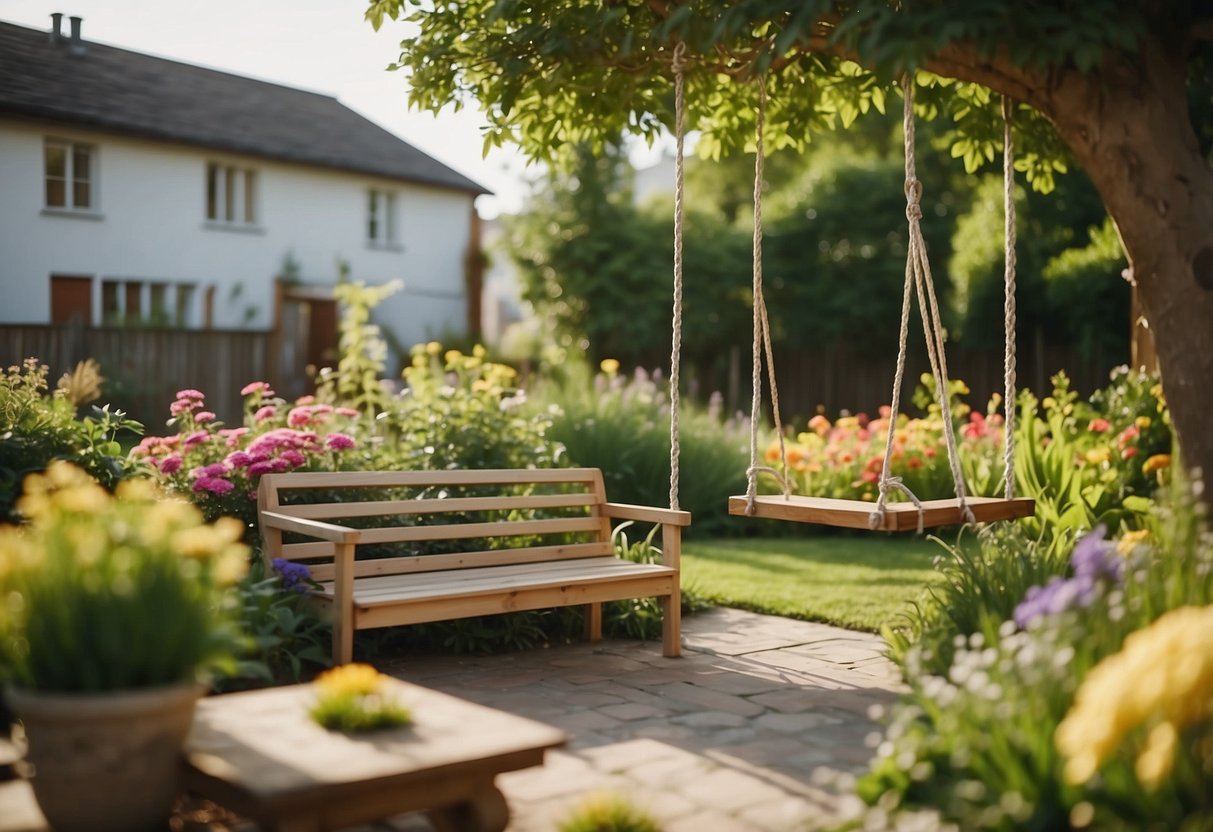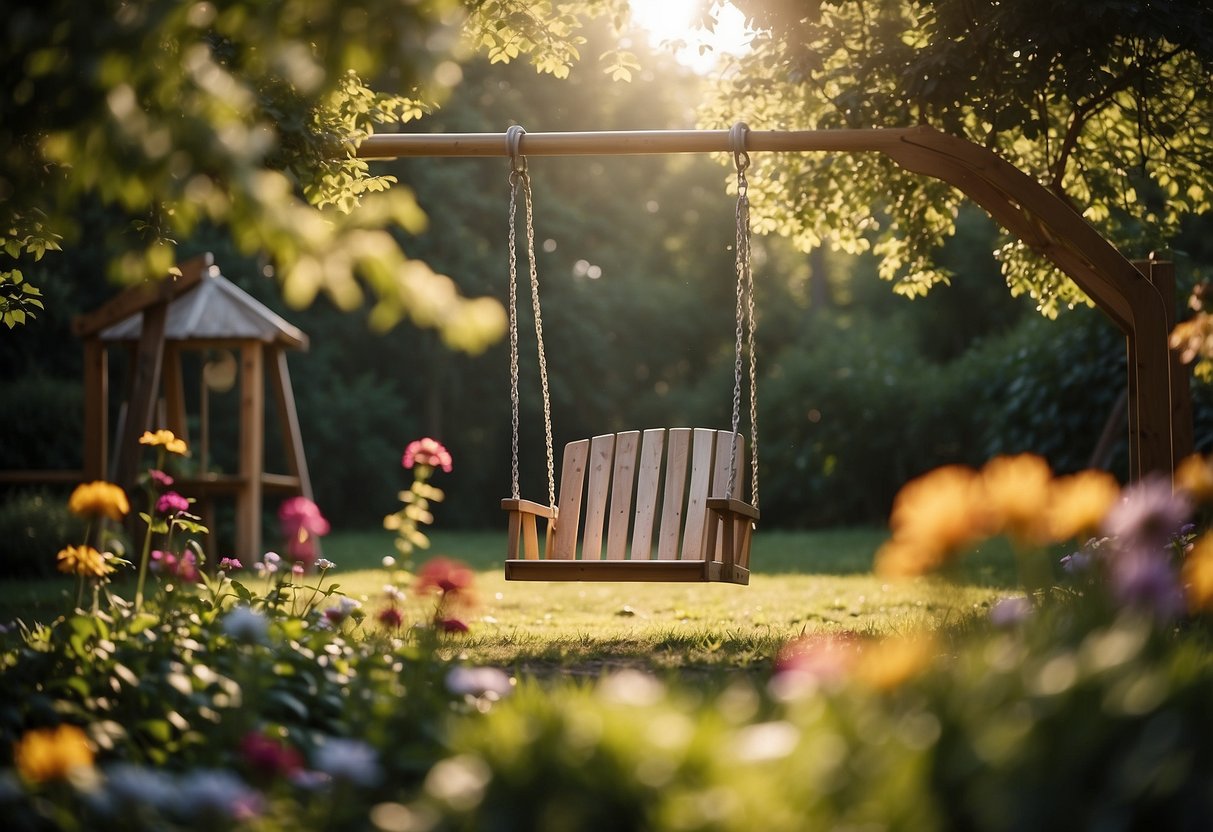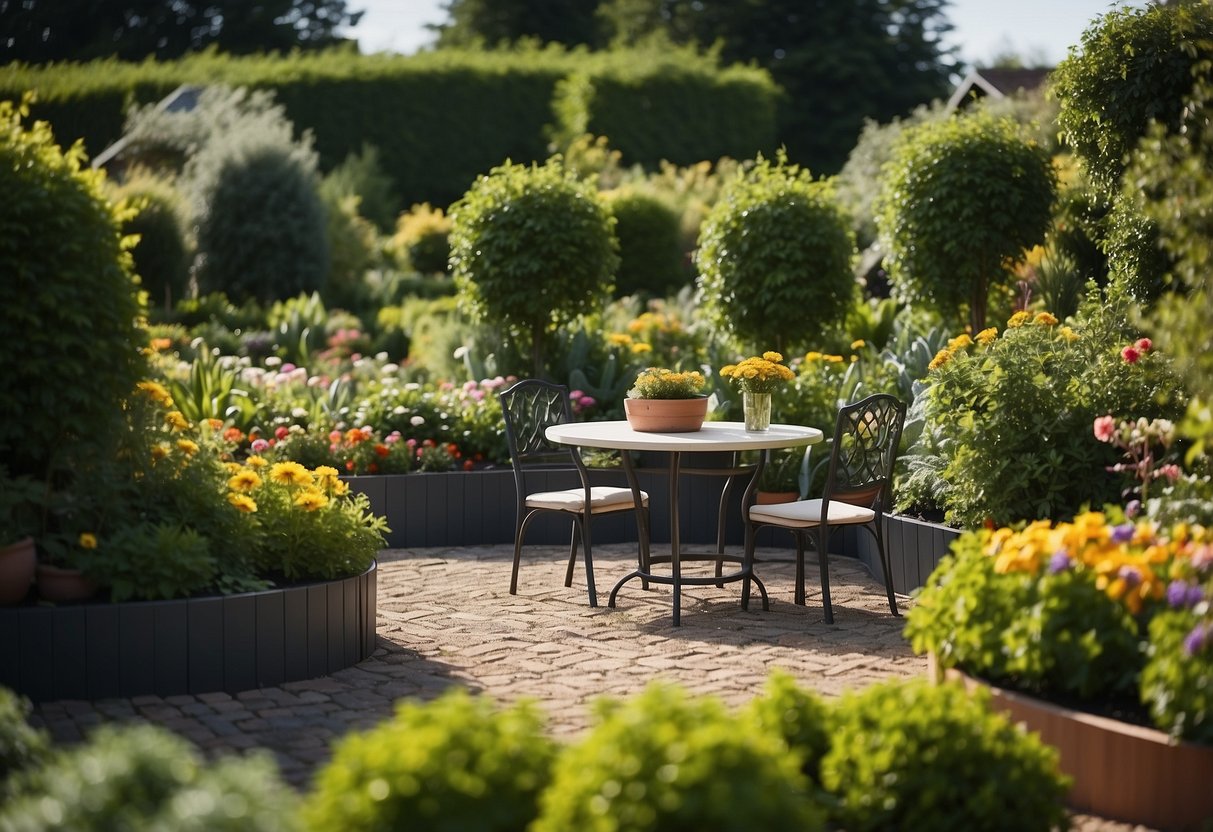Family Garden Ideas: Fun Activities for All Ages
Creating a family garden is a wonderful way to bring everyone together and make the most of your outdoor space. Whether you have young children who love to play or teenagers who seek privacy, a well-planned garden can cater to everyone’s needs.

A family garden provides a perfect setting for relaxation, play, and entertainment. It’s a space where you can grow your own vegetables, enjoy a beautiful flower bed, or even create fun DIY garden projects. No matter the size of your yard, there are countless ideas to transform it into a place everyone will love.
1) Create a Butterfly Garden

Choose plants like milkweed, coneflowers, and lavender that attract butterflies. These plants provide nectar for adults and leaves for caterpillars.
Avoid using pesticides since they can harm butterflies. Instead, try natural pest control methods.
Make sure there is a sunny spot in your garden. Butterflies need the sun to warm up and become active.
Use a mix of annuals and perennials to ensure continuous blooming. This keeps the butterflies coming back throughout the seasons.
Group the same type of plants together in drifts. This makes it easier for butterflies to find and visit your garden.
2) Build a Mini Greenhouse

A mini greenhouse is a great addition to your family garden. It allows you to grow plants even when the weather is not ideal.
You can easily make one using old wooden crates. Just stack them up and add a plastic cover. This creates a perfect environment for your plants.
Using a repurposed glass-door cabinet from IKEA is another good option. Add some grow lights and a small fan to keep the air circulating. This helps prevent mold and keeps your plants healthy.
For more ideas, check out these DIY mini greenhouse ideas.
3) Install a Swing Set

Adding a swing set to your garden can provide endless fun for your kids. It’s a great way for them to enjoy the outdoors and get some exercise. You can choose from various designs, such as the classic A-frame or a double post setup.
Make sure to prepare the area well. The ground should be level to ensure stability. Try to place the swing set in a spot where you can easily keep an eye on your children while they play.
For more detailed plans and ideas, check out these free DIY swing set plans. Happy building!
4) Grow a Vegetable Patch

Growing a vegetable patch can be both fun and rewarding. Start by clearing the area of grass and weeds. This helps your plants get the nutrients and water they need.
Choose a sunny spot in your garden. Most vegetables need lots of sunlight to grow well. A sunny spot ensures your veggies are healthy and less likely to be nibbled by pests.
Make sure your soil is rich. You can amp up your soil with compost to give your vegetables a good start.
Happy gardening!
5) Add a Water Feature

Adding a water feature can make your family garden more relaxing. It can be something simple, like a small fountain or pond.
A Japanese fountain can bring a unique touch to your garden. These fountains often have a calming effect.
A raised garden pond can serve as a beautiful focal point. It’s a great way to draw attention and create a peaceful space.
6) Plant a Fruit Tree

Adding a fruit tree to your garden is a fantastic idea. It provides fresh fruit for your family and enhances the beauty of your yard.
Choose a spot with plenty of sunlight and good soil. Consider fruit trees like apples, peaches, or even pawpaw.
For an average family, 1-2 trees of each kind should be enough. Early, mid, and late varieties ensure a continuous harvest. Check out details on how to layout your fruit tree orchard for more information.
7) Set Up a Garden Campfire

Creating a garden campfire is a fun way to gather the family. You can use it to roast marshmallows, tell stories, or just enjoy the evening outside.
Arrange some seating around the fire pit. Chairs or logs work great. Make sure to keep a safe distance from the fire.
You can also add some landscaping elements like native succulents and cacti around the fire pit, which can make the area look even more inviting.
8) Cultivate a Herb Spiral

You can create a beautiful and useful herb spiral in your family garden. This vertical garden design is both eye-catching and practical. Start by placing a stake in the ground at the center. Measure out a radius of about a meter or yard using string.
Use larger rocks or bricks to form the base. Gradually build up with smaller stones as you move upward. Fill in gaps with gravel or rubble. Plant herbs like rosemary, oregano, and thyme on top. For shadier spots, plant parsley, cilantro, and chives.
Learn more about building an herb spiral to enhance your garden’s appeal.
9) Design a Sensory Garden

A sensory garden is a wonderful way to engage the whole family. You can stimulate sight, smell, sound, touch, and taste.
Plant colorful flowers like lavender and marigolds to catch the eye. Use herbs like mint, rosemary, and basil to fill the air with pleasant scents.
Include wind chimes or rustling grasses to incorporate calming sounds. Have plants with interesting textures, such as lamb’s ear or ornamental grasses, for touch.
For taste, plant edible flowers and herbs. A sensory garden can make your outdoor space lively and enjoyable for everyone.
10) Install a Treehouse

A treehouse can transform your garden into a wonderland for your kids.
Consider a treehouse with a slide or windows to let in natural light. This makes it fun and practical.
Building a treehouse doesn’t always have to be expensive. Using pressure-treated lumber and some creative touches, you can keep costs down. Your kids will love the adventure it brings.
Benefits of a Family Garden

Starting a family garden is a great idea for many reasons. It can improve your family’s health and wellness, teach your kids valuable lessons, and positively impact the environment.
Health and Wellness
A family garden offers many health benefits. Gardening is a form of exercise that keeps you active. It helps you stay fit by doing activities like digging, planting, and weeding.
Spending time outdoors exposes you to sunlight, which provides vitamin D. This is good for your bones and immune system.
Gardening can also lower stress levels. Being around plants and nature has a calming effect, which is great for mental health.
Educational Value for Children
Gardening teaches kids about responsibility. They learn to care for plants and understand that living things need water, sunlight, and nutrients to grow.
It also helps them understand science concepts like photosynthesis and the life cycle of plants. Kids get hands-on experience with nature, which can make learning fun.
Working in a garden can also build patience. Plants take time to grow, so children learn that good things often require time and effort.
Environmental Impact
A family garden helps the environment in several ways. Growing your own food reduces the need to buy produce that’s been shipped long distances, which lowers your carbon footprint.
Gardens also provide a habitat for insects and pollinators like bees and butterflies. These creatures are important for a healthy ecosystem.
By composting garden waste, you can reduce what you send to the landfill. This turns organic material into rich soil, which helps your plants grow even better.
Planning Your Family Garden

When planning your family garden, focus on finding the best location, preparing the soil, and choosing plants that everyone will enjoy. These factors are essential for creating a joyful, productive outdoor space.
Choosing the Right Location
Choose a sunny spot for your garden, as most plants require at least six hours of sunlight a day. Make sure the area has good drainage to prevent waterlogging. Avoid placing your garden near large trees, as their roots can compete for nutrients and water.
Consider accessibility for all family members. Ensure paths are wide enough for children and easy to navigate. Additionally, try to position your garden close to a water source to make watering easier.
Soil Preparation and Fertilization
Start by testing your soil’s pH and nutrient levels, which can guide you on how to amend it. Most vegetables prefer a pH of 6.0 to 7.0. If needed, you can adjust the soil pH with lime or sulfur.
Work in organic matter like compost, manure, or peat moss to improve soil structure and fertility. This not only helps retain moisture but also provides essential nutrients for plant growth. Regularly adding mulch can also aid in weed control and maintaining soil temperature.
Selecting Plants Suitable for Families
Select plants that are easy to grow and maintain, making the gardening experience enjoyable for everyone. For vegetables, consider options like tomatoes, cucumbers, and carrots. These are typically favorites among children and are relatively low-maintenance.
Add a variety of herbs like basil, mint, and parsley, which can be educational and fun to harvest. For flowers, choose hardy, non-toxic varieties like marigolds, sunflowers, and nasturtiums. These can attract beneficial insects, which help with pest control.
Involve your family in the selection process to ensure everyone has a plant they are excited to nurture.
Maintaining Your Garden

Creating a family garden is just the start; keeping it beautiful and functional requires regular maintenance. Key areas to focus on include watering, pest and weed control, and adapting to seasonal changes.
Watering and Irrigation
Proper watering is essential for a thriving garden. Water your plants early in the morning to reduce evaporation. Drip irrigation systems are efficient and ensure water reaches the roots directly. Mulching helps retain soil moisture and prevents water loss.
Tips for efficient watering:
- Early morning watering: Reduces evaporation and fungal growth.
- Drip irrigation: Conserves water and targets plant roots.
- Mulching: Keeps soil moist and reduces watering frequency.
Stay consistent with watering, especially during hot spells, to keep your garden lush and healthy.
Pest and Weed Control
Dealing with pests and weeds is crucial for maintaining a healthy garden. Use organic methods like neem oil or insecticidal soap to manage pests. Introduce beneficial insects like ladybugs to help control harmful ones.
- Hand-pulling: Effective but labor-intensive.
- Mulching: Prevents weed seeds from germinating.
- Weed barriers: Landscape fabric can block weeds without chemicals.
Regularly inspect your garden to catch any issues early and maintain a vibrant, pest-free environment.
Seasonal Maintenance Tips
Each season requires different garden care. In spring, focus on planting new plants and pruning old ones. Summer needs regular watering and pest control. Fall is the time to clean up fallen leaves and prepare plants for the cold. Winter involves protecting plants from frost and planning for the next growing season.
Seasonal tasks:
- Spring: Plant, prune, fertilize.
- Summer: Water, control pests, mulch.
- Fall: Clear leaves, prune perennials, compost.
- Winter: Protect from frost, maintain tools, plan.
By adapting your maintenance to the season, you ensure that your garden stays beautiful and productive all year round.







